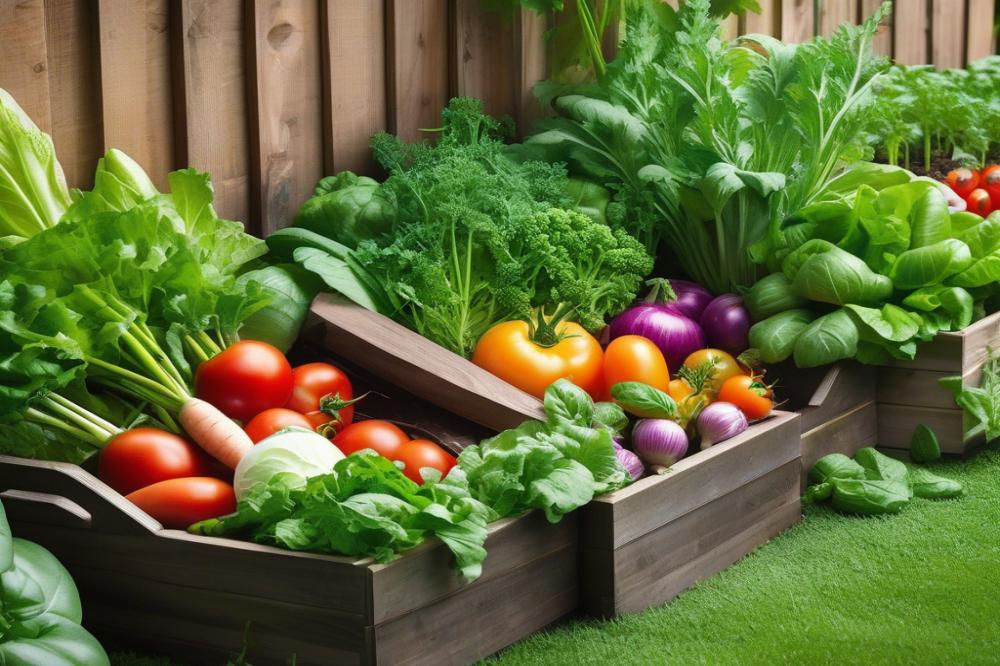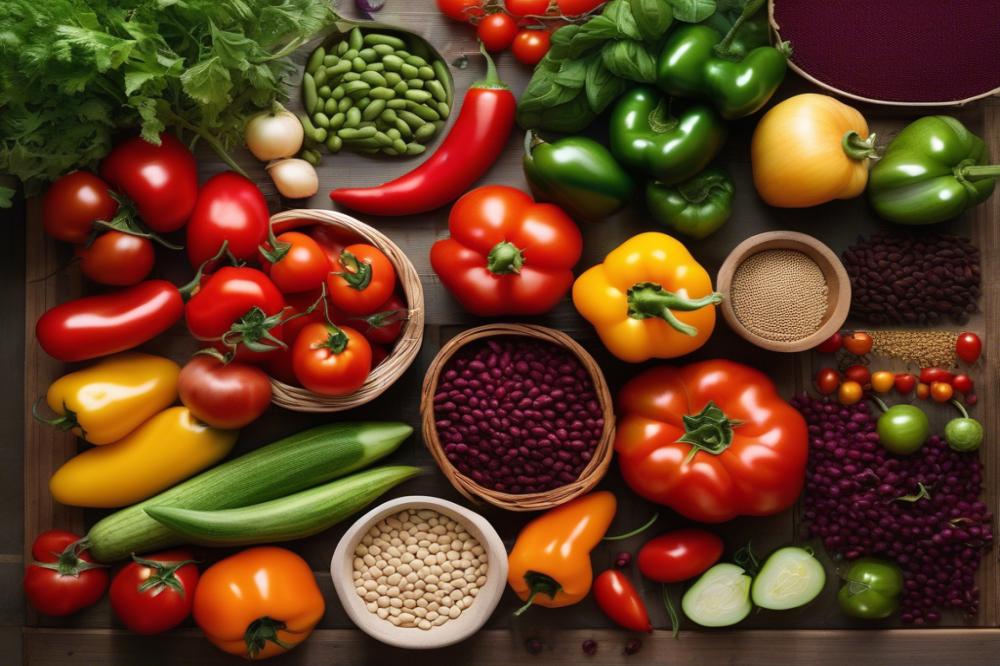Introduction
Growing Cannellini Beans offers a rewarding experience for those who love Home Gardening. These beans are not just any ordinary variety; they have a creamy texture and a nutty flavor that enhances many dishes. Many home gardeners find joy in cultivating various bean types and Cannellini Beans make a delicious addition to any garden.
Beans are important for several reasons. They provide essential nutrients, improve soil health, and offer a source of protein. When you grow beans in your garden, you contribute to a more sustainable lifestyle. Not only that, but they thrive in a variety of conditions, making them perfect for novice and experienced gardeners alike. Understanding different bean varieties can help you select the best fit for your garden.
There are multiple benefits to growing these beans specifically. For starters, they are easy to care for and don’t require extensive gardening tips to thrive. While tending to these delicate plants, you’ll also be practicing important garden care techniques. Proper soil requirements will help ensure healthy plant growth, while effective pest control will safeguard your crop from common threats.
Harvesting beans can be both exciting and satisfying. Once your Cannellini beans are ready, they can be transformed into tasty meals. Cooking Cannellini beans opens the door to a variety of bean recipes that can delight family and friends. From soups to salads, the culinary possibilities are endless.
Companion planting can further enhance your bean-growing experience. By placing certain plants near your beans, you can improve growth and deter pests naturally. Embracing these gardening strategies can make all the difference in your crop yield. In the end, growing Cannellini beans in your garden is not just about cultivating plants; it’s about cultivating a deeper connection with the food you love.
Growing Cannellini Beans


Planting season and ideal climate
Spring is the perfect time to start planting beans. Wait until the last frost has passed. These plants thrive in warm conditions, ideally needing temperatures between 70°F and 90°F. If temperatures drop below 60°F, growth may slow significantly. Areas with full sun will yield the best results. Consider local climate and conditions before planting. Beans enjoy dry weather but will need water while they establish roots.
Choosing the right variety of Cannellini beans
Multiple bean varieties are available to choose from, so think about what fits your garden best. Some can be bush type, while others are pole types. Bush beans tend to mature more quickly and are often easier to manage. Pole types can provide more harvest over a longer season, but they require support. Check seed catalogs for the specific characteristics of each type. Read reviews and ask experienced gardeners for recommendations before making a selection.
Soil requirements for Cannellini beans
Beans prefer well-drained soil that is rich in organic matter. Aim for a pH between 6.0 and 7.0 for optimal growth. Before planting, consider testing your soil to determine its nutrient composition. Adding compost can greatly improve soil quality. Avoid heavy clay or overly sandy soils, as these can hinder development. Good drainage is essential because standing water can lead to root rot. Practicing crop rotation can also help maintain soil health.
Preparing the garden bed
Before planting, clear the garden bed of weeds and debris. This step helps to prevent competition for nutrients and water. Tilling the soil loosens it, allowing roots to penetrate more easily. Incorporate organic matter by mixing in compost or well-rotted manure. Raised beds are an excellent option for better drainage and soil control. As you prepare, consider companion planting with crops like corn or squash. These can offer protection while maximizing space in your garden. Regular maintenance is vital for healthy plants. Keep an eye on your garden while watching for pests that may attack your beans. Practicing pest control early can prevent major issues later on.
Gardening Tips for Growing Cannellini Beans


Watering Needs and Methods
Watering is vital for growing beans successfully. Start by keeping the soil consistently moist but not waterlogged. It is best to use drip irrigation or a soaker hose to deliver moisture directly to the roots. Avoid wetting the leaves. If rainfall is low, water deeply once a week, allowing the soil to dry slightly between watering sessions. Monitor the plants closely, especially during dry spells, as stressed plants can yield poorly.
Fertilization and Nutrient Requirements
Beans generally require less fertilization than other crops. However, you might want to enrich the soil with organic matter before planting. Compost or well-aged manure will work nicely. During the growing season, a light application of nitrogen-rich fertilizer may be beneficial, especially in the early stages. Look for balanced fertilizers to support overall growth. Too much nitrogen can lead to lush foliage but fewer pods.
Companion Planting for Cannellini Beans
Companion planting is a great strategy for enhancing garden productivity. Some good partners for beans include corn and cucumbers. These plants provide shade and support, helping beans grow well. Avoid planting beans near onions and garlic, as they can hinder each other’s growth. Marigolds can deter pests, and planting them nearby might help protect your beans.
General Garden Care Practices
Maintaining a healthy garden involves regular care and monitoring. Keep an eye out for pests such as aphids and beetles. Hand-picking them can often reduce their numbers without harsh chemicals. Mulching around your bean plants helps retain moisture and suppress weeds. When the pods are mature, harvesting beans should take place promptly. This practice encourages further pod development. After collecting your harvest, consider exploring different bean recipes to enjoy your hard work in the kitchen.
Pest Control for Cannellini Beans


Common pests affecting Cannellini beans
In the world of growing beans, several pests can wreak havoc on your plants. Aphids are tiny insects that suck the sap from leaves, leading to curled foliage. Beetles, specifically the Mexican bean beetle, can cause serious damage by devouring leaves. In addition, spider mites thrive in dry conditions, webbing the plants and sucking their juices. Whiteflies are another nuisance, and they can spread diseases while feeding. Identifying these pests early is crucial for effective pest control.
Organic pest control methods
For those who prefer natural approaches, many organic pest control options exist. Insecticidal soaps can be very effective against soft-bodied insects like aphids. Neem oil is another alternative that disrupts the life cycle of several pests. Spraying a mixture of water and dish soap often works as a homemade remedy, too. Handpicking larger pests like beetles can be tedious but effective. Introducing beneficial insects, such as ladybugs, helps keep populations in check naturally.
Preventative measures for healthy plants
Healthy plants are less susceptible to infestations. Start with proper soil requirements; rich, well-drained soil promotes robust growth. Moreover, practicing companion planting can deter pests. Planting marigolds nearby can repel harmful insects and attract beneficial ones. Regular garden care is vital. Rotate crops each year to avoid pest buildup. Watering at the base of the plant instead of from above reduces fungal diseases. By following these gardening tips, your chances of encountering serious pest issues decrease significantly.
Harvesting Cannellini Beans


Signs of Ripeness
Determining when to harvest involves observing the color and feel of the pods. Look for firm, dry pods that are tan or light brown. The plant’s leaves may also start to yellow and die back, indicating that the beans are ready. If you hear rattling when you shake the pods, this is a strong sign. Be cautious though; waiting too long can lead to splitting pods and loss of beans.
Proper Harvesting Techniques
When you’re ready for gathering, use sharp garden shears or scissors. Cutting the stems rather than pulling them can prevent damage. Always wear gloves if you have sensitive skin, especially if you’ve applied any pest control products. Gather your beans early in the morning when temperatures are cooler. This practice helps maintain their freshness. After harvesting, avoid piling beans too high. This can create bruising and spoilage.
Storage Tips for Harvested Beans
Storing your beans correctly will maximize their shelf life. Ensure they are completely dry before placing them in an airtight container. Glass jars work well, but resealable bags can also be effective. Keep the container in a cool, dark place. Avoid areas with high humidity, as this can lead to mold. For longer-term storage, consider using a freezer. When ready to use, remember to soak them prior to cooking. There are many delicious bean recipes you can explore to enjoy your harvest.
Cooking Cannellini Beans
Nutritional Benefits of Cannellini Beans
Cannellini beans are not just delicious; they also provide many health benefits. Rich in protein, they serve as an excellent meat alternative. These beans are packed with fiber, aiding digestion and promoting gut health. They also contain important vitamins and minerals, such as iron, magnesium, and folate. Regular consumption may lower cholesterol and stabilize blood sugar levels. Including this bean variety in your meals can contribute positively to overall wellbeing.
Popular Bean Recipes Featuring Cannellini Beans
Many recipes can showcase the creamy texture and subtle flavor of these beans. A classic dish is the Tuscan white bean soup, where these beans shine as a savory base. Stir-fries can incorporate them for added protein and a hearty texture. Consider mixing with pesto and pasta for a quick yet satisfying meal. Salads also benefit from their addition—try them with arugula, cherry tomatoes, and a tangy vinaigrette. Each of these recipes amplifies the beans’ natural flavor while offering variety to your dining table.
Tips for Cooking Dried and Fresh Cannellini Beans
Preparing dried beans requires some planning. Start by soaking them overnight to reduce cooking time. This simple step also improves digestion. After soaking, rinse and simmer them in fresh water for about an hour or until tender. Fresh beans, on the other hand, need less cooking time. Just boil them for 5 to 10 minutes. Don’t forget to season! A touch of salt, garlic, or herbs enhances their flavors. When cooking either type, try to avoid overcooking. The key is achieving that pleasant creaminess without losing their shape.
Incorporating these beans into your meals is an easy way to enjoy their benefits. Have fun exploring different recipes and cooking techniques. Happy cooking!
A Bountiful Journey Awaits
Growing your own Cannellini beans brings numerous benefits. They are nutritious, offering a healthy source of protein and fiber. Homegrown produce often tastes better than what you find in stores. Plus, nurturing plants can be a rewarding experience. The process teaches patience, responsibility, and the joy of hard work paying off.
Home gardeners should consider adding these beans to their gardens. They thrive in various climates and can adapt to different soils. With some basic knowledge and care, anyone can successfully cultivate them. Don’t hesitate to experiment with your garden. Trying new things is part of the joy of gardening.
Picture yourself enjoying a home-cooked meal with freshly harvested beans. Nothing compares to the satisfaction of eating what you’ve grown. Remember, gardening tips can guide you through the planting and harvesting process. Embrace the learning curve and celebrate every little victory. This hobby can enrich your life in many ways. Growing beans is not just about the end product; it’s about the journey from seed to table.
So dig in and get started! Your garden can be a wonderful place for growth, both for plants and for you.



